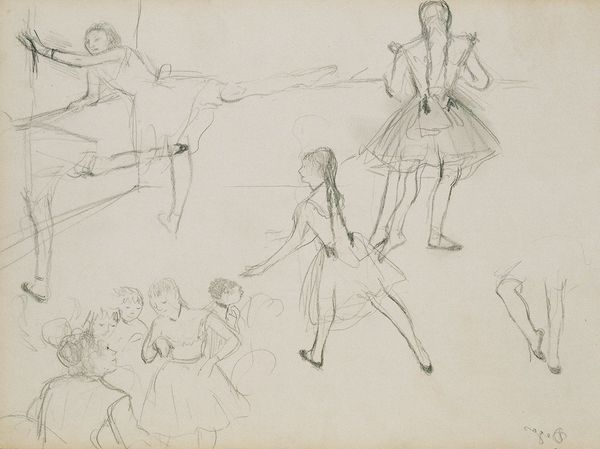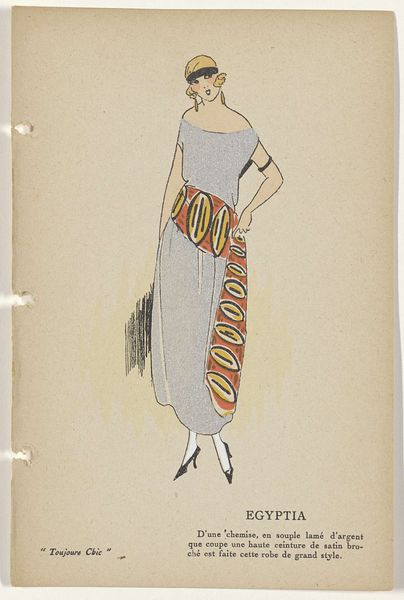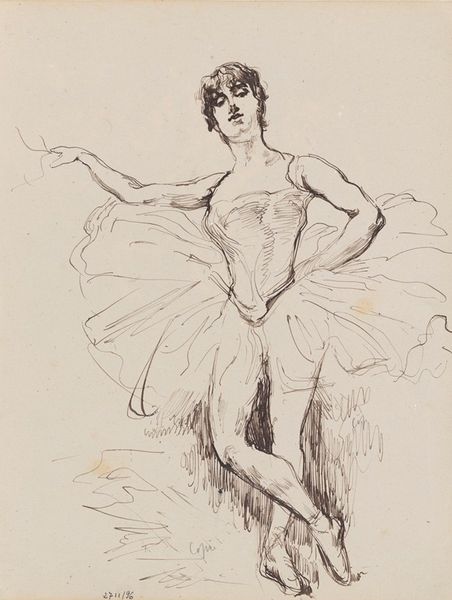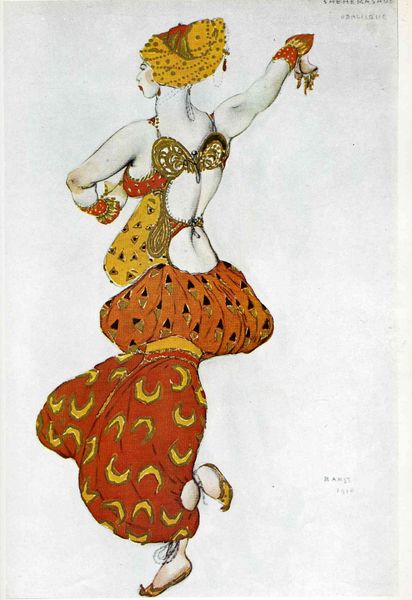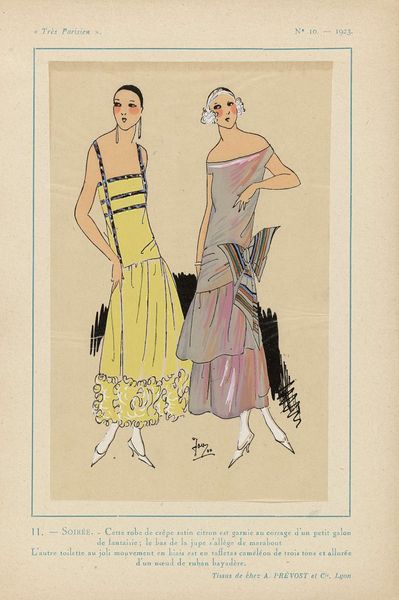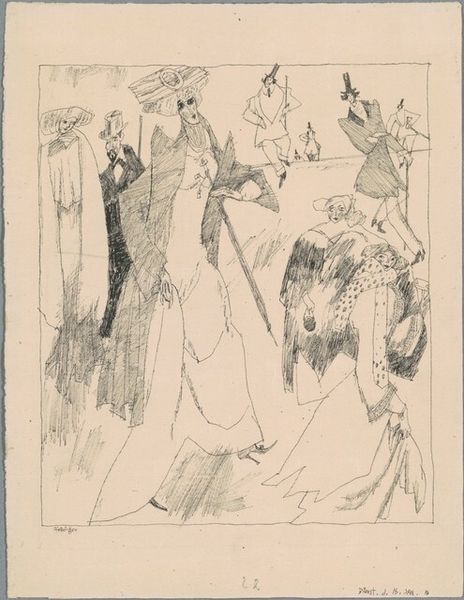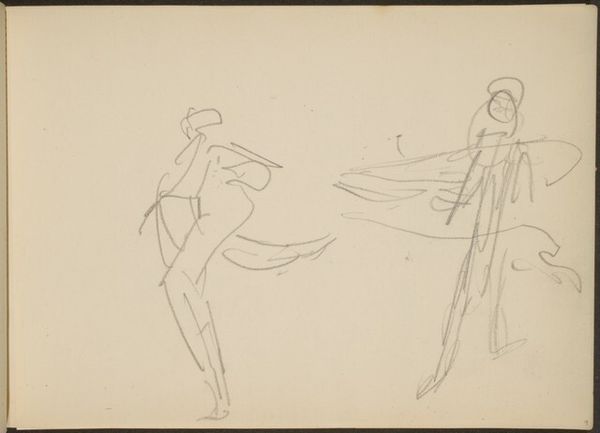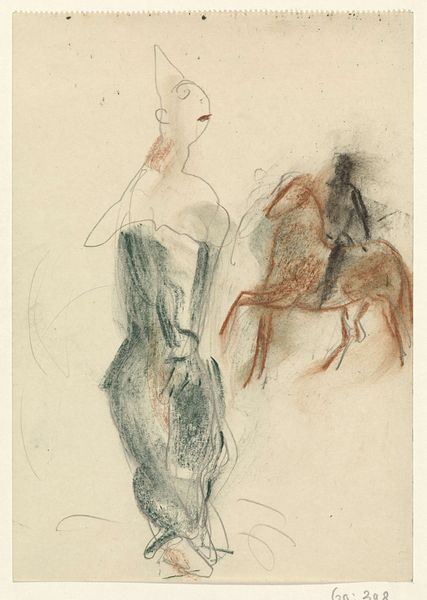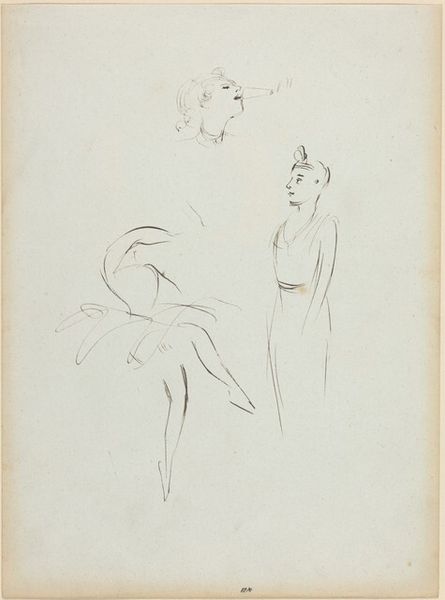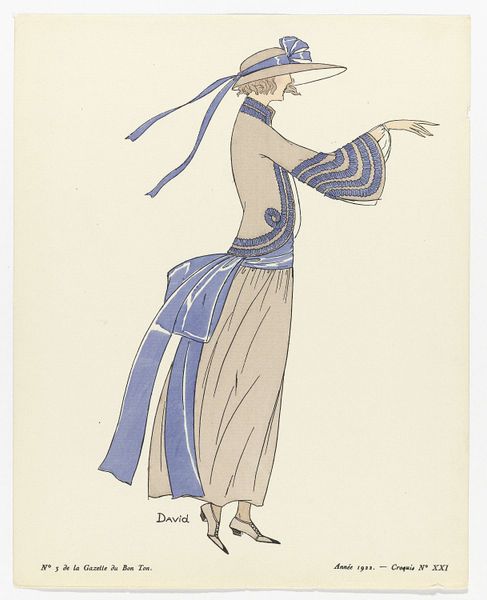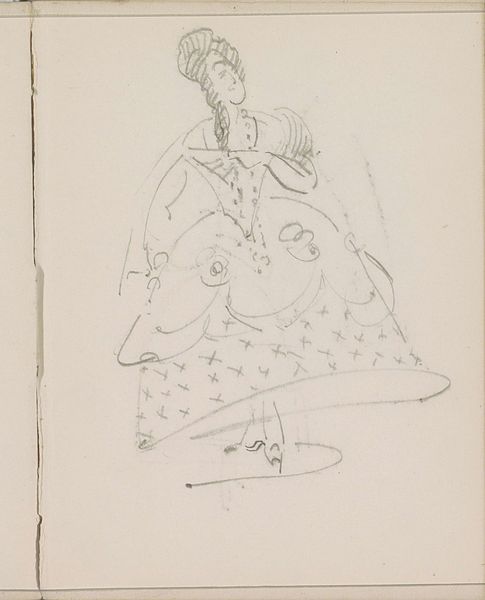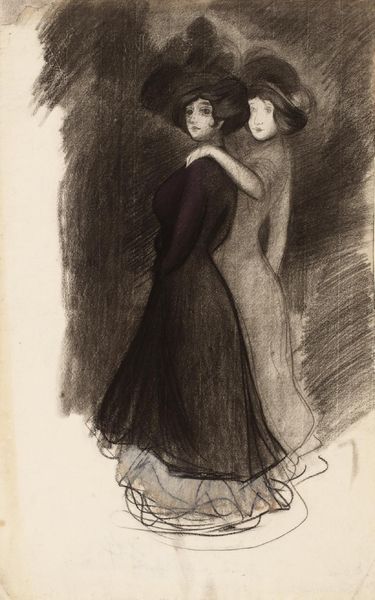
Dancers, costume sketch for Henry Irving’s Planned Production of King Richard II
0:00
0:00
drawing, paper, watercolor, ink
#
drawing
#
figuration
#
paper
#
watercolor
#
ink
#
costume
#
line
#
watercolour illustration
Copyright: Public Domain: Artvee
Curator: Immediately striking, isn’t it? The use of ink and watercolor on paper gives Edwin Austin Abbey’s “Dancers, costume sketch for Henry Irving’s Planned Production of King Richard II” a quality of lightness and spontaneity. I'm drawn to how minimal use of materials manages to produce so much character. Editor: Absolutely. I sense an exploration of courtly theatricality—how constructed identities and flamboyant gestures serve a certain elitist social sphere. Look at the figures; are they complicit in, or subversive to, these flamboyant roles? Curator: Considering Abbey’s process, these are costume designs intended for theatrical production. It reveals so much about the labor involved in staging these performances, far beyond the actors. Every thread, every color, has been considered and rendered with care, often by unseen hands. Editor: The question of labor is crucial. What about the politics of representation here? What commentary, if any, is being made about gender, class, or power through costume and performance? We have to ask who benefits from this visual spectacle. The choice of a leaf-like trimming could hint at a nature/culture clash or comment on clothing’s connection to both natural resources and societal excess. Curator: Perhaps that very clash—the tension between artifice and nature—was Abbey's intention. Looking closer at the watercolor technique, there’s a remarkable blend of precision and fluidity. Notice the thin washes that build depth despite their translucency. Editor: Speaking of fluidity, there's an undeniably homoerotic subtext here, with those figures striking performative, exaggerated poses. The visual culture of theater then provided space for questioning or subtly defying rigid gender norms. How might this planned production speak to queer histories? Curator: What I appreciate is the evidence of a handcrafted aesthetic and its importance in relation to the final stage production. One can imagine Abbey refining these designs based on available fabrics or the skills of costume makers. It wasn't merely about an aesthetic ideal, but collaborative construction. Editor: This sketch, however, leaves a window open for viewing the possible ways performance might serve to not only entertain, but engage audiences and encourage conversation about representation on stage. Curator: Well said, that's given me new things to consider. It’s always worthwhile considering the hands behind the magic.
Comments
No comments
Be the first to comment and join the conversation on the ultimate creative platform.
